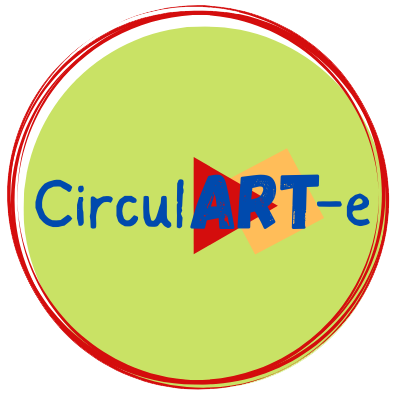Art has the remarkable ability to transcend barriers and bring people together. In line with the EU Youth Goals of ‘Inclusive Societies’ and ‘Space and Participation for All,’ CirculART-e is a project that harnesses the power of art, creativity, and visual education to support the inclusion and active participation of individuals with migrant or cultural minority backgrounds in their local communities. By creating cross-sectorial learning environments, CirculART-e aims to achieve specific objectives that are specific, measurable, achievable, relevant, and time-bound (SMART).
SMART Objectives
CirculART-e has defined the following SMART objectives to guide its implementation and impact:
Objective 1 – Empathy Mapping for Self-awareness and Skills Development:
Support the social entrepreneurship and engagement of young people with migrant and cultural or ethnic minority backgrounds through the participatory peer-to-peer method of empathy mapping. This approach fosters self-awareness, soft skills development, and identity-rebuilding.
Objective 2 – Circular and Community-based Initiatives:
Promote the active participation of young people, particularly those at risk of marginalization due to cultural, social, and economic obstacles, in their communities through circular and community-based initiatives. These initiatives will empower them to contribute meaningfully to their localities.
Objective 3 – Creative Blended Learning Methodologies:
Improve the skills of youth workers to address the needs of young people at risk of social exclusion by utilizing creative and attractive blended learning methodologies based on visual art education and the culture of the circular economy. The project will also focus on enhancing digital skills in art-based education, making learning opportunities more accessible.
Target Groups
CirculART-e has two primary target groups that are interconnected:
1. People with Migrant and Minority Backgrounds: This group consists of individuals living in different EU urban communities who have been heavily impacted by the challenges posed by the COVID-19 pandemic. They often face difficulties such as lack of self-confidence, feelings of inadequacy, reduced learning opportunities, weakened social networks, and limited tools for staying connected and participating in community-building.
2. Youth Workers and Educators: This group includes professionals working in formal and non-formal educational settings in multi-ethnic contexts, as well as trainers and researchers engaged in social participatory action-research. The COVID-19 pandemic has presented significant challenges to their work, as physical distancing restrictions limit their ability to reach out to vulnerable groups effectively.
Expected Outputs and Outcomes:
CirculART-e aims to achieve the following outputs and outcomes in line with its objectives:
Outputs:
1. Empathy Map of Skills and Wishes of Young People: A comprehensive understanding of the skills and aspirations of young people with migrant and minority backgrounds, enabling tailored support and engagement.
2. Training Programme for Youth Workers and Young People: A blended learning program combining online and offline visual art education to promote the sense of initiative and entrepreneurship among young people in multicultural settings.
3. CirculART-e Blended Method and Curriculum for Youth Workers: A specialized curriculum and method that integrates visual art education to promote social entrepreneurship and active participation of young people at risk of social exclusion.
Outcomes
1. Increased social engagement and active participation among young people with fewer opportunities due to their migrant and minority backgrounds.
2. Strengthened collaboration between project partners and local stakeholders to co-design more effective programs supporting youth participation.
3. Enhanced quality of youth participation in local communities through the development of creative and attractive blended and multilingual learning resources.
Project Activities
The CirculART-e project will involve various activities to achieve its objectives, including project management and implementation, development of project results, learning and teaching training activities, transnational partner meetings, and multiplier events. These activities will provide a platform for partners to collaborate, exchange best practices, and disseminate project outcomes to a wider audience.
CirculART-e embodies the spirit of inclusion and participation by leveraging art, creativity, and visual education to empower individuals with migrant or cultural minority backgrounds. By nurturing social entrepreneurship, promoting active community engagement, and enhancing the skills of youth workers, CirculART-e aims to create a more inclusive and interconnected society. Through its outputs and outcomes, the project will leave a lasting impact, fostering social cohesion and empowering young people to shape their own futures.
-
Results:







